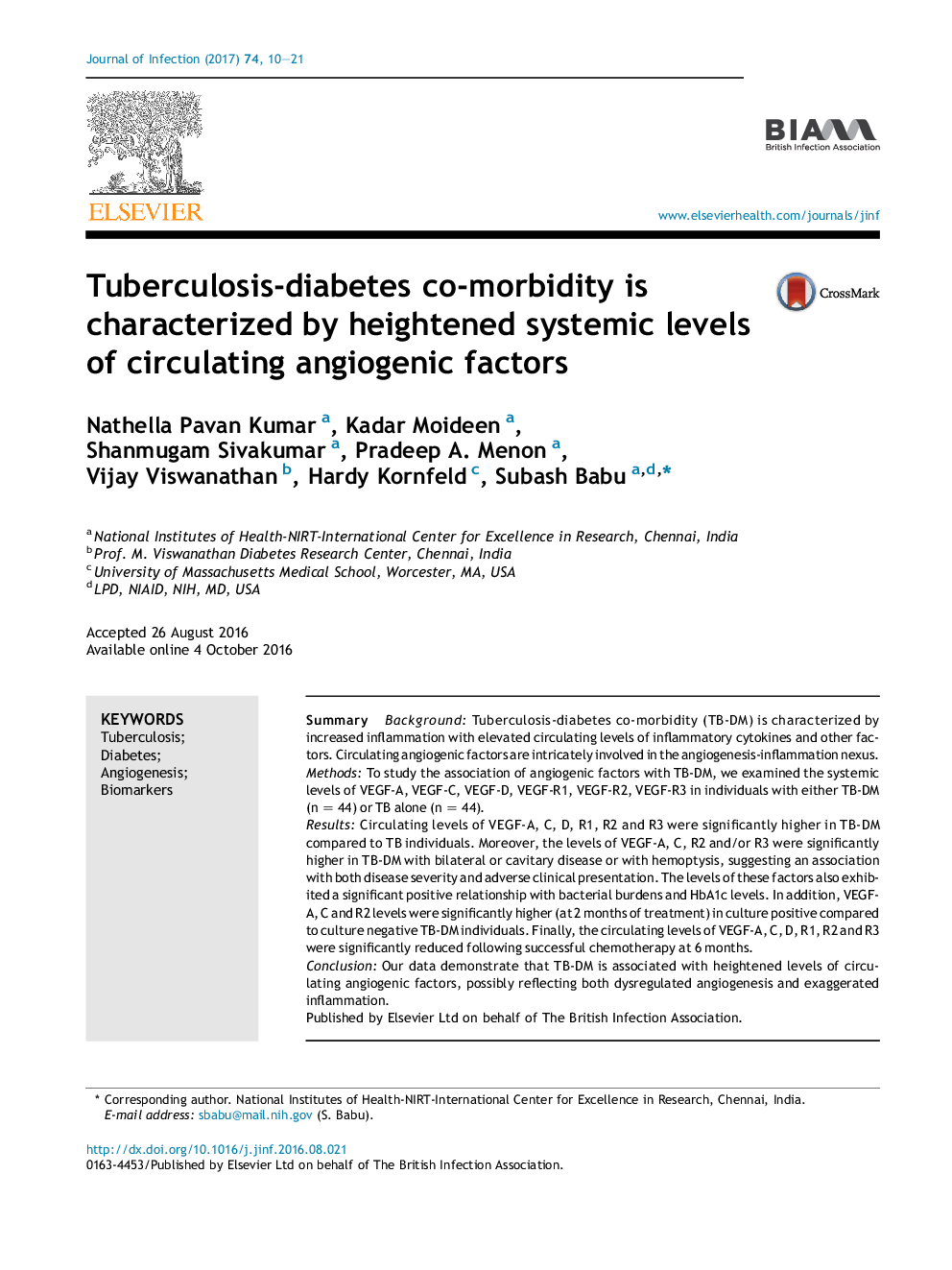| Article ID | Journal | Published Year | Pages | File Type |
|---|---|---|---|---|
| 5668662 | Journal of Infection | 2017 | 12 Pages |
â¢Angiogenic factors are associated with disease severity and adverse clinical presentation in TB-DM.â¢The systemic increase in angiogenic factor levels is driven by dysglycemia and bacterial burdens.â¢Treatment results in reversal of enhanced levels of systemic angiogenic factors.
SummaryBackgroundTuberculosis-diabetes co-morbidity (TB-DM) is characterized by increased inflammation with elevated circulating levels of inflammatory cytokines and other factors. Circulating angiogenic factors are intricately involved in the angiogenesis-inflammation nexus.MethodsTo study the association of angiogenic factors with TB-DM, we examined the systemic levels of VEGF-A, VEGF-C, VEGF-D, VEGF-R1, VEGF-R2, VEGF-R3 in individuals with either TB-DM (n = 44) or TB alone (n = 44).ResultsCirculating levels of VEGF-A, C, D, R1, R2 and R3 were significantly higher in TB-DM compared to TB individuals. Moreover, the levels of VEGF-A, C, R2 and/or R3 were significantly higher in TB-DM with bilateral or cavitary disease or with hemoptysis, suggesting an association with both disease severity and adverse clinical presentation. The levels of these factors also exhibited a significant positive relationship with bacterial burdens and HbA1c levels. In addition, VEGF-A, C and R2 levels were significantly higher (at 2 months of treatment) in culture positive compared to culture negative TB-DM individuals. Finally, the circulating levels of VEGF-A, C, D, R1, R2 and R3 were significantly reduced following successful chemotherapy at 6 months.ConclusionOur data demonstrate that TB-DM is associated with heightened levels of circulating angiogenic factors, possibly reflecting both dysregulated angiogenesis and exaggerated inflammation.
